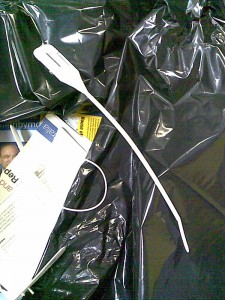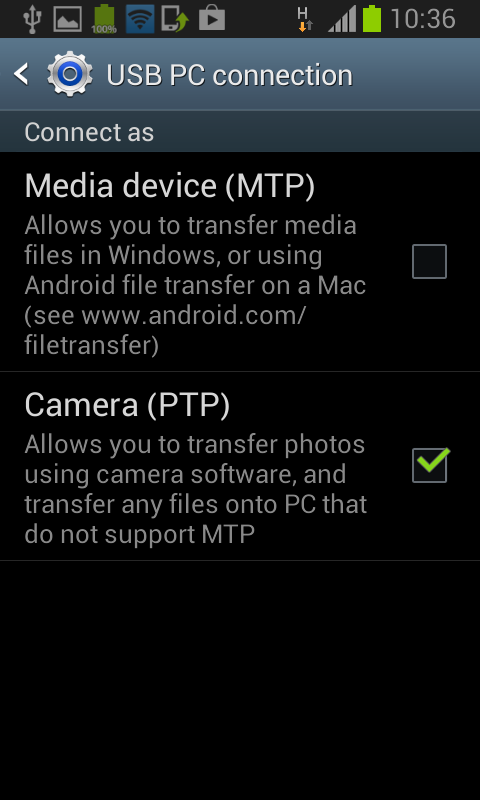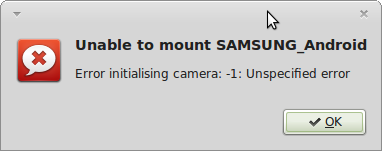
If the security cable tie isn’t pulled tight engaging the teeth, it can be pulled right off. If it was secured, it would have been damaged while being removed (with scissors).
I did scrutineering at the last Victorian state election, and apart from the shocking level of informal voting and above-the-line voting, there was another shock.
Electoral fraud – or the possibility of it.
The nice thing about living in Australia is that we take our democracy seriously, and we balance being able to prove that what the outcome was with ballot secrecy. Nobody, no level of government or industry, no individual, will know how you voted without you telling them. Yet at the same time we can have confidence that our electoral system is not being rorted; our governments change back and forth, and each time it does representatives of both sides keep a close watch on the activities of the employees of the AEC and VEC, eyeballing each individual vote and knowing that they are all distinctly different from the others in spite of being a collection of handwritten marks on a slip of paper.
To minimize the risks of ballot box tampering, at the start of voting the ballot boxes (just big cardboard boxes here in Australia) are sealed shut with serialized cable-ties. An independent somebody witnesses this when an Electoral Commission employee does this (typically the first voters who wandered into the polling station), and their details are recorded (by details, I think that means signature, but it could be actually enough to track the person down afterwards) and they sign the form that records the sealing of those particular ballot boxes.
So how come they use cable ties that can be “done up” and yet the teeth don’t engage – thus leading to an unsealed ballot box? Is it too much to ask for a cable tie with teeth on both sides?
I should have kicked up a fuss, but it was a safe booth in a safe seat, and who needs the hassle?
Anyways, the reason I relate this story is that I’ve been seeing comments along the lines of “this is the 21st century, why they hell are we using pencil and paper?” Because, dickwads, computers don’t leave a fucking audit trail. There’s no scrutineering of electrons. How the hell are you meant to verify that Clive Palmer didn’t in fact get 98% of the vote? You can’t. Interesting that Clive Palmer owns the company that supplied all of the (suspiciously cheap) voting machines to the AEC, but that hasn’t got anything to do with it. And the cost! Pencils are 10c each, paper is about a cent a sheet. A shitty computer is $500, and requires a bunch of electricity. “Do it on the Internet, or use smart phones!” I hear you say. No, because while nearly everyone can move a pencil around, significantly fewer can use their computer to vote. And there’s no connection between how you voted, and the counting of votes. The announced result could be anything, and there’d be absolutely no way of proving it wrong. So, yes, computers are shiny and clearly the best way of implementing a voting system, if you want an electoral system you can’t actually trust.
 The answer is, of course, you need to enable PTP transfers, rather than MTP transfers. MTP transfers work great for Windows or Mac, but not Linux. On your phone, drag down the Notifications screen, then under “Ongoing” you’ll find something about “other USB options”. Select that and you can pick the PTP transfer.
The answer is, of course, you need to enable PTP transfers, rather than MTP transfers. MTP transfers work great for Windows or Mac, but not Linux. On your phone, drag down the Notifications screen, then under “Ongoing” you’ll find something about “other USB options”. Select that and you can pick the PTP transfer.




